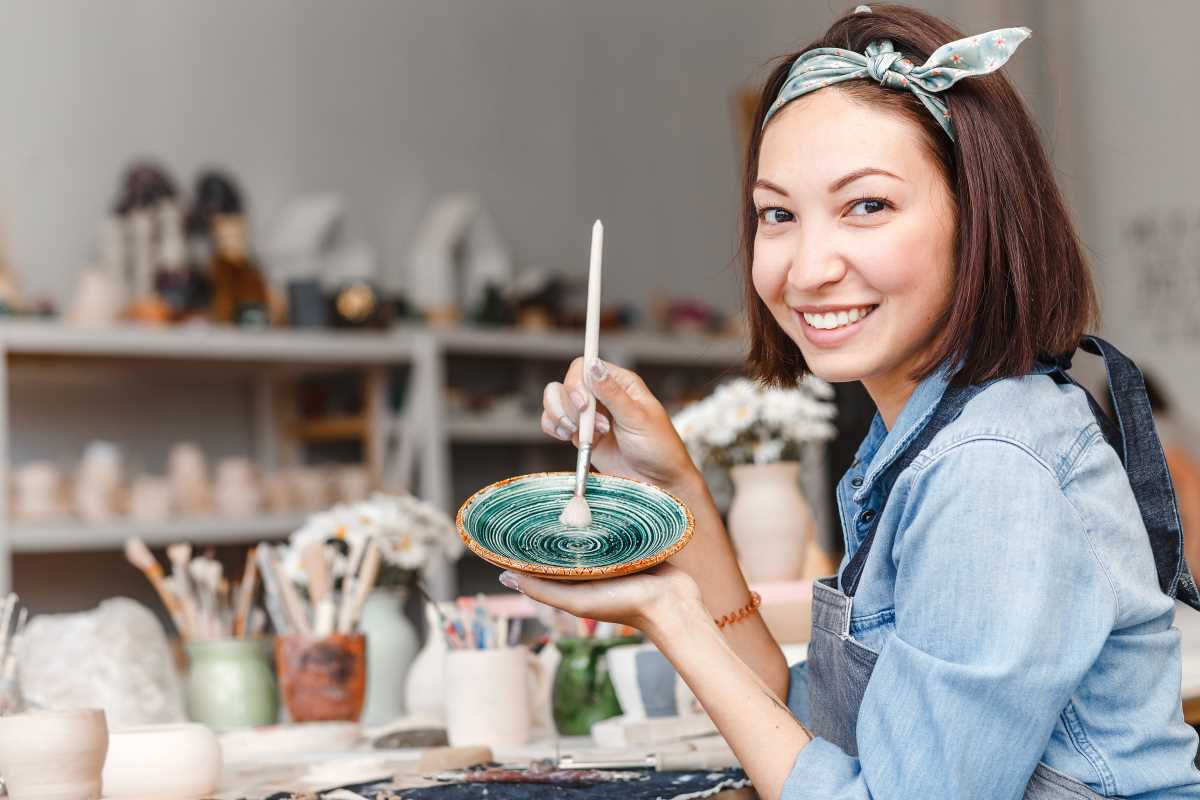Sunlight streams across a vibrant courtyard as you pick up a block of richly colored clay, instantly connecting with the heritage that lives in your hands. Each spin of the potter’s wheel and every careful brushstroke on textured fabric brings a sense of wonder and the pleasure of creating something unique. Artisans breathe new life into traditional crafts, blending time-honored skills with fresh ideas. By joining this creative process, you move beyond simply collecting keepsakes and experience the true heart of centuries-old artistry, guided by the makers who continue to shape these treasured traditions.
Expect more than a quick demonstration: each studio opens a window into historic rhythms and personal narratives. You will return home not just with handcrafted treasures, but with a renewed sense of creative confidence and fresh perspective on cultural traditions.
Discover the Heart of Traditional Workshops
Micro-climates of inspiration bloom around communal worktables where artisans share their heritage one precise motion at a time. Here, you witness how subtle shifts in pressure shape petals of porcelain or how the weave’s tension reveals a village’s seasonal tales. This setting invites you to observe, ask, and fold your curiosity into every step.
By engaging in dialogue with local makers, you learn the nuanced vocabulary embedded in fiber and clay. You grasp why certain dyes shimmer only under low sunlight and how specific grains of sand influence kiln temperature. These fresh angles lift workshops from mere activities into living classrooms.
From Clay to Cloth: Fresh Perspectives
Imagine yourself mixing natural pigments using locally salvaged plants—a process that carries centuries of trial and error in each pigment swirl. Or picture threading a loom guided by a mentor whose lineage has spent decades refining each pattern. These unexpected insights ignite a deeper respect for each artifact you craft.
Instead of generic takeaways, you leave with personal glimpses into how creative communities adapt their techniques to modern tastes. Understanding this evolution equips you to appreciate both tradition and innovation in every handcrafted stitch and molded form.
Essential Step-by-Step Craft Workshops
- Clay Conditioning – Prepare raw clay for molding.
- Steps:
- Knead chunks firmly for three minutes each.
- Fold and press repeatedly until smooth.
- Roll into test coils to check elasticity.
- Cost/Availability: Usually included in workshop fees; in-studio.
- Insider Tip: Keep a towel nearby to catch moisture and maintain consistency.
- Steps:
- Palette Mixing – Blend natural pigments for textiles or ceramics.
- Steps:
- Measure small samples into a palette well.
- Add water drop by drop while stirring to test opacity.
- Record ratios in a notebook for reproducibility.
- Cost/Availability: ~$5 per color sample; garden or studio sources.
- Insider Tip: Label mixtures immediately to avoid confusion with similar hues.
- Steps:
- Loom Setup – Arrange warp threads for hand weaving.
- Steps:
- Secure warp beam and thread cords through heddles.
- Apply even tension with a weighted beam clamp.
- Tie front apron rod and check alignment.
- Cost/Availability: Loom rental $10–$20; weaving centers.
- Insider Tip: Count warp threads by hand after setup to ensure none are skipped.
- Steps:
- Glaze Application – Add a protective finish before firing ceramics.
- Steps:
- Dip piece in thin glaze mixture.
- Brush away drips and smooth uneven spots.
- Wipe bottom edge to prevent kiln sticking.
- Cost/Availability: Materials often included; available on communal shelves.
- Insider Tip: Hold by handle or foot to avoid fingerprints on glaze.
- Steps:
- Detail Carving – Create fine patterns in pottery or woodwork.
- Steps:
- Sketch design lightly with charcoal pencil.
- Select a carving tool with proper tip width.
- Carve steadily with consistent pressure, deepening gradually.
- Cost/Availability: Tools usually provided; shared toolboxes.
- Insider Tip: Rest wrist on a small wood block for stability and precision.
- Steps:
Local Artisan Stories Up Close
In remote corners of artisan villages, you meet makers who trace their craft through family trees stretching back centuries. They recount moments when a single discovery—like a new firing technique—rejuvenated an entire community’s reputation.
Sharing tea behind workshop walls often reveals the interplay of tradition and experimentation. You sense how artisans balance respect for ancestral methods with playful innovation, and you might even witness a prototype destined to redefine local style.
Tips for Smooth Village Visits
- Choose Homestays Nearby
- Stay within walking distance of studios to experience daily rhythms.
- Select hosts who cook with local ingredients and share communal dinners.
- Pack lightweight earplugs to block early milling noises.
- Insider Tip: Confirm breakfast includes regional produce to fuel photo excursions.
- Arrange Group Sessions Off-Peak
- Contact coordinators in advance for workshop scheduling.
- Off-season visits often bring more one-on-one guidance and tool access.
- Insider Tip: Send a short message outlining your skills and interests to get tailored attention.
- Learn Basic Craft Phrases
- Practice words like “clay,” “weave,” or “glaze” in the local language.
- Use free online audio clips for pronunciation practice.
- Insider Tip: Carry illustrated flashcards of tools for clearer communication.
- Carry a Collapsible Portfolio Folder
- Transport fragile pieces safely.
- Insert acid-free paper layers between items to prevent abrasion.
- Insider Tip: Ask studios about protective wraps made from recycled textiles for sustainable packing.
By joining these rural craft experiences, you actively take part in living cultural heritage. Carry your new skills and perspectives with you to inspire future creativity.







